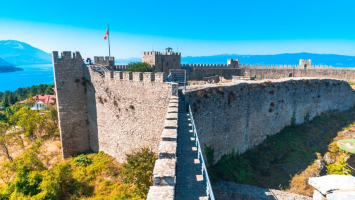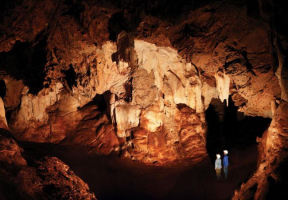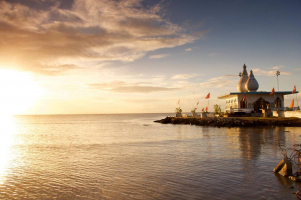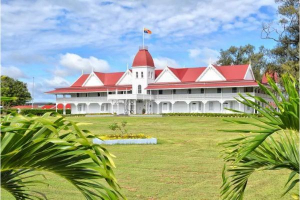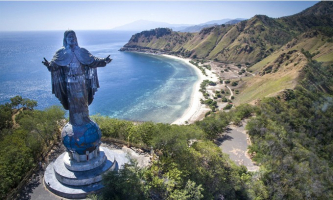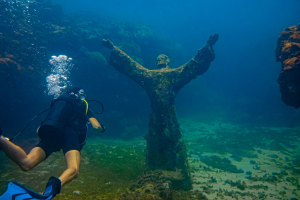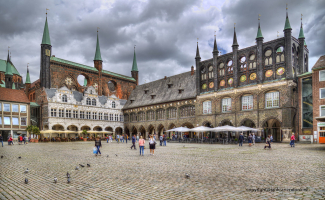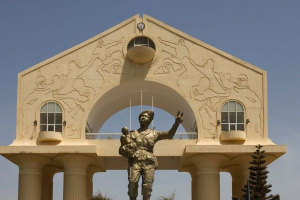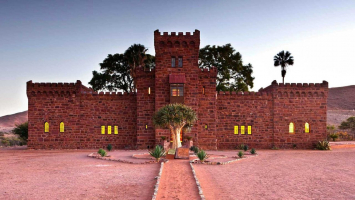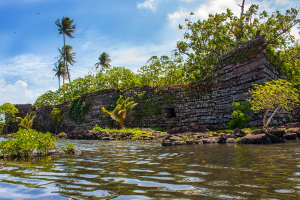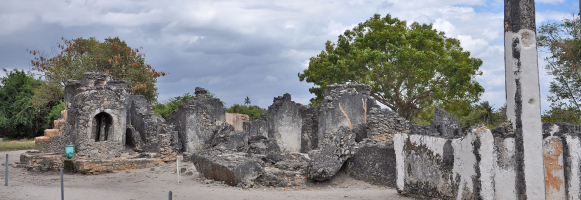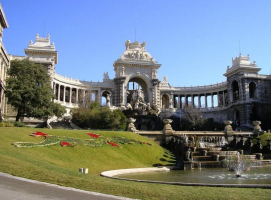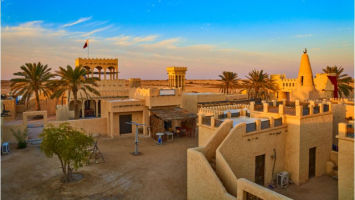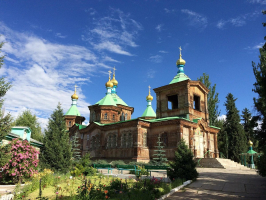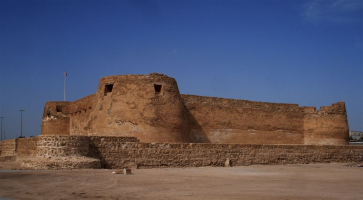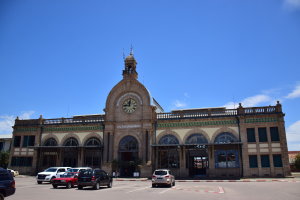Top 13 Most Historical Sites in Anglesey
Anglesey is a beautiful island located off the North West coast of Wales. This island has beautiful natural scenery and ancient historical sites. That is why ... read more...every year this island attracts so many tourists. Let's find out with Toplist the most beautiful historical sites in Anglesey!
-
The first position on the list of the most beautiful historical sites in Anglesey is Plas Newydd which is a country home surrounded by gardens, parkland, and surrounding woodland on the north side of the Menai Strait. The current structure dates back to 1470 and has changed through the years to become one of Anglesey's most prominent houses. It was afterward owned by the Griffiths, Baylys, and Paget families, and it served as the Marquesses of Anglesey's country residence and the hub of a sizable agricultural estate. The National Trust has owned the home and gardens, which have views of the strait and Snowdonia, since 1976, and they are accessible to the general public.
By the time Henry Cyril Paget passed away in 1905, the estate's wealth vanished, and Plas Newydd had taken over as the family estate's only residence. The 6th Marquess demolished the theater, dismantled the ceiling crenellations, and constructed a huge dining room with a trompe l'oeil seascape painting that filled the space with Snowdonian mountains and Italian churches.
Visitors at Plas Newydd can stroll through the gardens while taking in the breathtaking views of the Menai Strait and Snowdonia for a modest fee. Rhododendrons are in full bloom in the gardens, and the woodland is a lovely place to stroll. Before having tea and cake in the Old Dairy's tearooms, you can also enjoy a tour of the historic house.
Location: Llanfairpwllgwyngyll, Wales, United Kingdom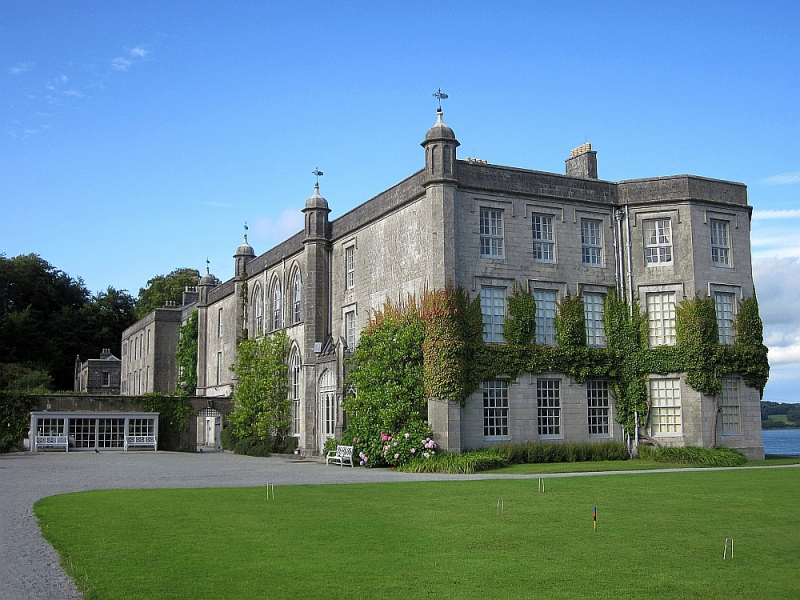
Photo: wikipedia 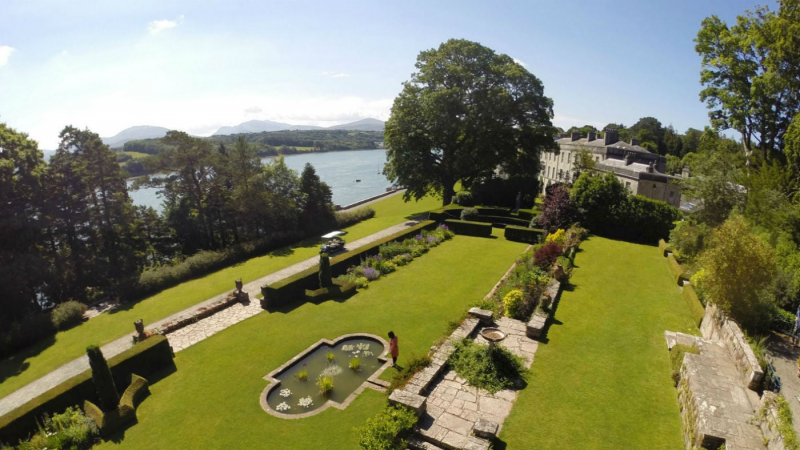
Photo: nationaltrust.org.uk -
Roman Britannia Superior's province in Roman Wales included a tiny fortlet called Caer Gybi. Unknown in Latin is its name. It is currently located in the town's center in the Welsh county of Anglesey. Welsh speakers refer to Holyhead as Caergybi after the fort.
One of just a few three-walled Roman forts in Europe is the fort. The fourth side, which faced the water, most likely housed a quay. Although its exact age is uncertain, it is generally accepted that it was a component of a plan developed in the late fourth century and linked to Segontium to protect the west coast from Irish sea raids. On the summit of Holyhead Mountain, the Romans also constructed a watchtower, known as Mynydd y Twr, which was almost certainly utilized as the fort's vantage point. Both may have been left behind when the army was despatched to put down Eugenius of Gaul's uprising in 393 or so.
Visitors can still see several of the old Roman defenses at Caer Gybi today, including at least one corner tower and walls that occasionally reach heights of 4 meters. The design of Caer Gybi is similar to that of other Roman fortifications from the same period, several of which still stand today in places like Portchester Castle and Pevensey Castle and formed the "Saxon Shore" forts. Even more, distant Roman sites, like the well-preserved Lugo Roman Walls in northern Spain, are reflected in the architecture.
Location: Victoria Rd, Holyhead LL65 1UB, United Kingdom
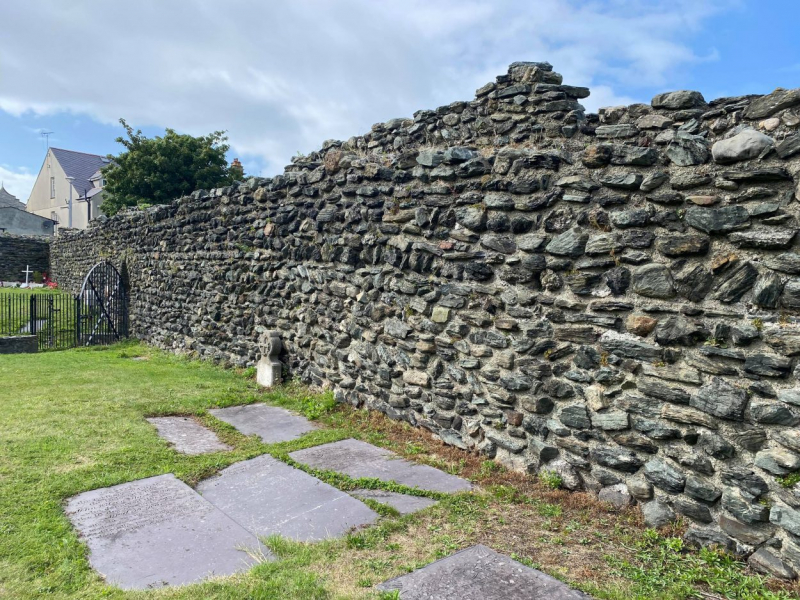
Photo: heritagedaily.com 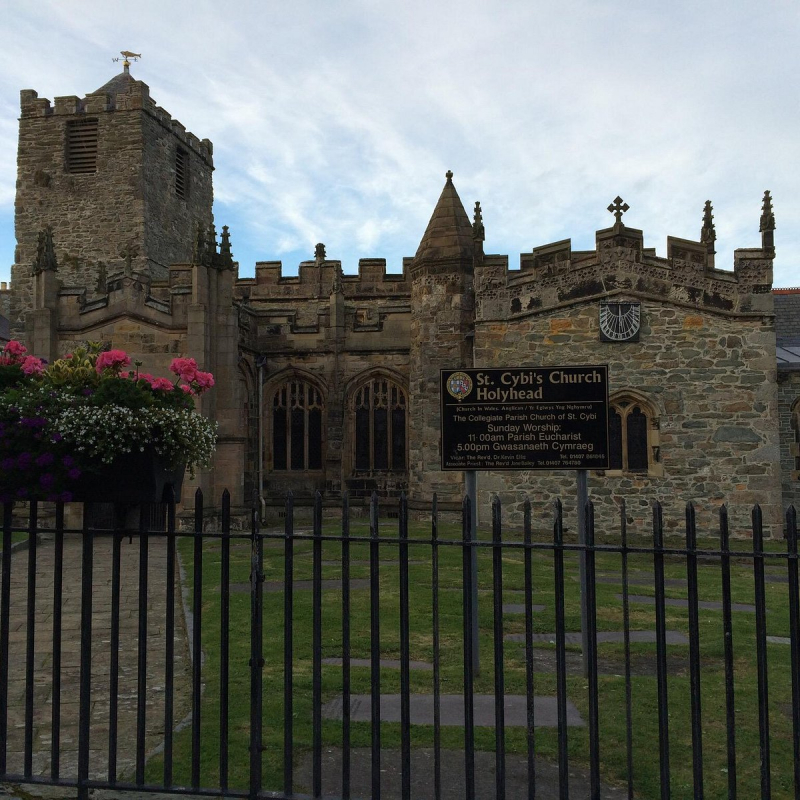
Photo: tripadvisor.com.vn -
On the island of Anglesey, a gristmill called Melin Llynon, sometimes known as Llynon Mill, is situated outside the community of Llanddeusant. It is Wales' lone remaining operational windmill.
In 1775–1776, the mill was erected on land held by the surgeon Herbert Jones for £529, 11s. It is under the tower mill category. The equipment is housed inside a stone tower, and the cap switch, or moveable top, rotates to allow the sails to capture wind from any angle. The tower had four stories and was 9.3 meters high. It was used to power equipment that ground barley, oats, and maize. Thomas Jones (1756–1846), the first miller, ran it up until his passing. The cap's damage from a storm in 1918 prevented it from turning into the breeze. For the following six years, it continued to run sporadically when the wind was from the southwest. The mill eventually went out of business and started to fall apart. Up until the local authorities renovated it between 1978 and 1986, it was abandoned and unusable. In 1986, it reopened, and today it makes stoneground flour.
When the location was deemed hazardous to operate in 2018, the windmill's sails ceased to spin. In order to make the windmill operational once more, restoration work was nevertheless scheduled for the summer of 2022. Melin Llynon is one of the most beautiful historical sites in Anglesey.
Location: Llynon Mill, Llanddeusant, Holyhead LL65 4AB, United Kingdom
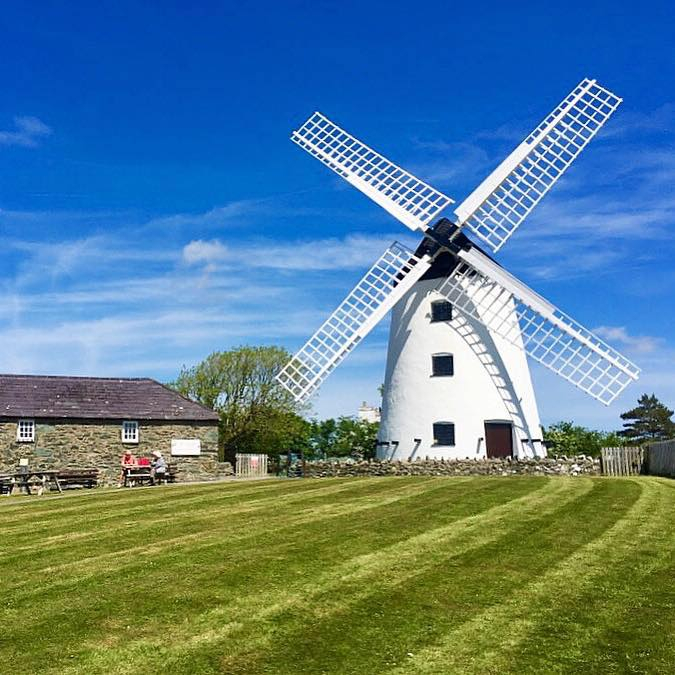
Photo: facebook.com 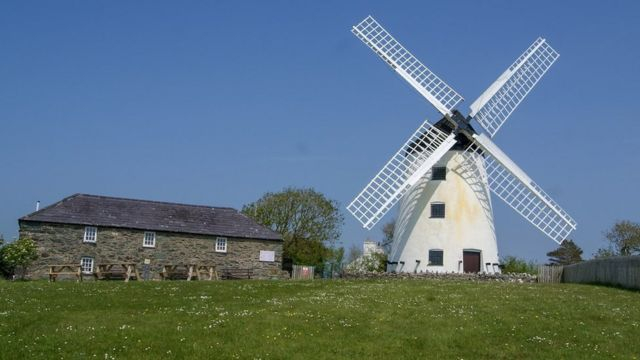
Photo: bbc.com -
King Edward I constructed the impressive medieval fortification Beaumaris Castle in the late 13th century on the Isle of Anglesey. Beaumaris, which was intended to be the jewel in the crown of his Welsh castles, has been dubbed "the greatest castle never constructed" due to its unfinished nature. Despite this, with over 700 years of history to discover, its immense scale and exquisitely symmetrical form continue to inspire people in the contemporary era.
The last of Edward I's "iron ring"—also known as Longshanks'—impressive castles constructed to demonstrate his control of Wales, Beaumaris Castle was started in 1295. Construction on the grand site, which was intended to be the largest and most spectacular of the group, had ended by the 1320s. Beaumaris was doomed to remain an unfinished masterpiece because of a lack of funds and unrest in Scotland.
One of the most exquisite specimens of medieval construction in the nation, the charming ruins of Beaumaris Castle are now maintained by Cadw. Half of the castle's an outside wall, which is made up of 12 towers and 2 gatehouses, is surrounded by a sizable moat. The inner ward is made up of an additional 6 sizable towers and 2 D-shaped gatehouses.
Visitors are welcome to explore the castle's amazing symmetrical design, climb its towers, and perch on its battlements, which, while under construction, never let visitors down. Beaumaris Castle, together with the Welsh strongholds of Edward I in Conwy, Harlech, and Caernarfon, is listed as a UNESCO World Heritage Site, underscoring its significance in British history.
Location: Castle St, Beaumaris LL58 8AP, United Kingdom
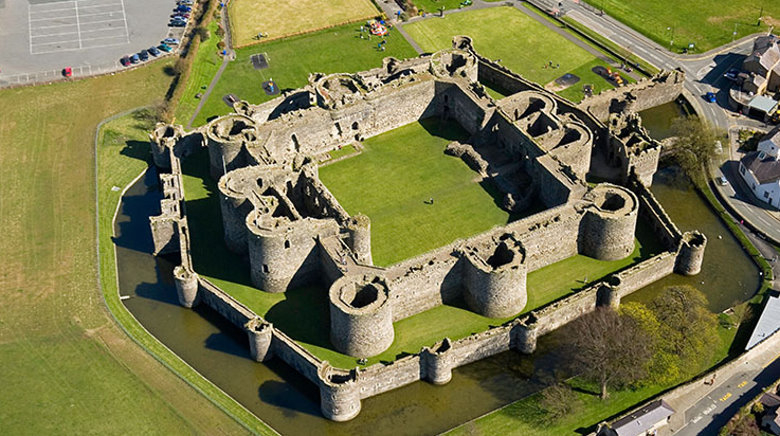
Photo: beaumaris.com 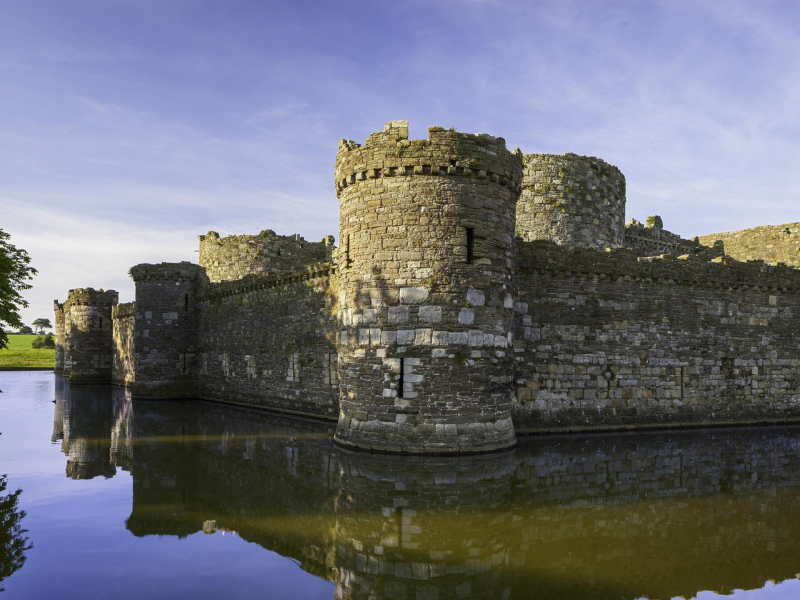
Photo: visitwales.com -
Din Lligwy evokes the alluring idea of a Celtic town tucked away in a forest grove. Romano-British-era stone cottages in an enclosure are still standing today. Unfortunately, the trees that surround the location are quite new. It would have been relatively open when it was inhabited, with a lovely view of Lligwy Bay.
Early 20th-century excavations turned uncovered ceramics and coins, mostly from the third and fourth centuries A.D., demonstrating that the enclosed settlement had been inhabited during the later Roman era. Local Britons who lived in roundhouses and largely absorbed the Roman invaders' way of life would have been the inhabitants of this area. Numerous structures, including roundhouses and rectangular barns or workshops, have been discovered through excavation. These structures contain iron slag and smelting hearths, which indicate that the area was once utilized for metalworking. Roman coins from the third and fourth centuries, as well as ceramics, glass, and a little silver ingot, were discovered.
Despite their age, the Din Lligy Hut Group's ruins are remarkably well-preserved and offer a fascinating glimpse into some of Britain's earliest history. The outside wall is nearly finished, with the exception of a height reduction, and it is also possible to see the remnants of two round huts and numerous rectangular ones. Informational signs outline its fascinating past, and visitors can also explore the prehistoric Lligwy Burial Chamber and Capel Lligwy, a ruined 12th-century chapel, all of which are within a 5-minute walk.
Location: Rhos Lligwy, Wales, United Kingdom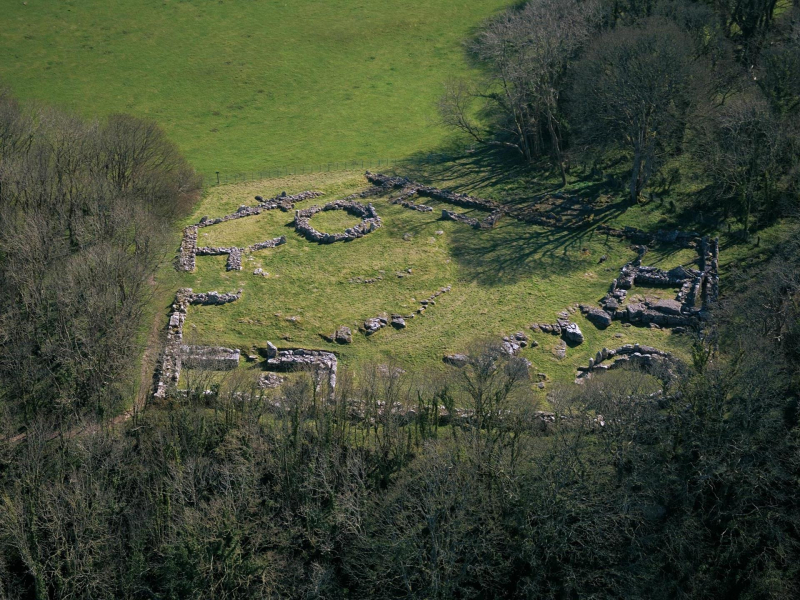
Photo: visitwales.com 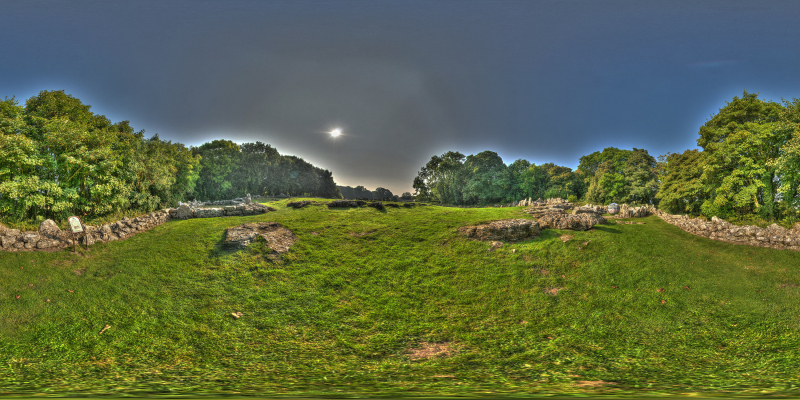
Photo: relics360.com -
The next position on the list of the most beautiful historical sites in Anglesey is Bryn Celli Ddu. A prehistoric site called Bryn Celli Ddu Welsh can be found close to Llanddaniel Fab on the Welsh island of Anglesey. Meaning "the mound in the gloomy grove," its name means. In 1928 and 1929, archeological excavations were conducted there. It is the centerpiece of a significant Neolithic Scheduled Monument under Cadw's protection, and visitors can access the burial chamber inside the mound by a stone passage. Many people are interested in the burial chamber's mystery pillar, the replica of the "Pattern Stone" with its sinuous serpentine carvings, and the possibility that the site was once a henge with a stone circle and was used to determine the summer solstice's date
.
A series of five postholes that were previously believed to have been contemporaneous with the tomb is the site's earliest discovered remains. Pine charcoal from two of the pits was radiocarbon dated in 2006, and the results indicated that the charcoal dates to around 4000 BC, placing it near the end of the Mesolithic, 1,000 years before the following era of use. They serve an unknown purpose, nevertheless.
Location: Llanddaniel Fab, Llanfair LL61 6EQ, United Kingdom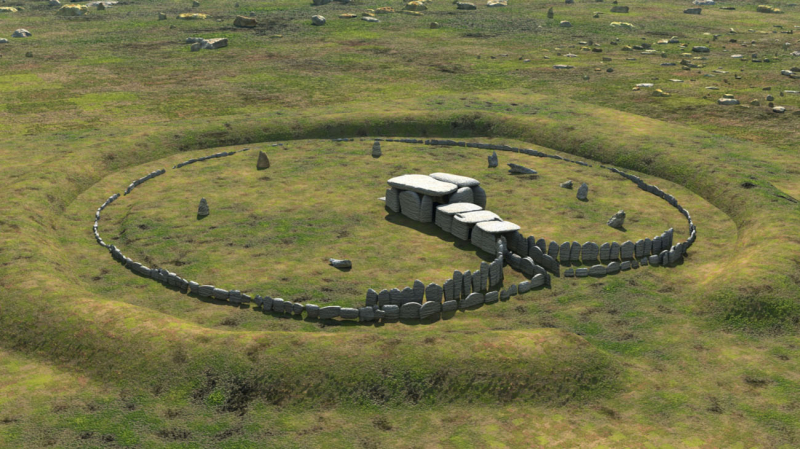
Photo: medievalheritage.eu 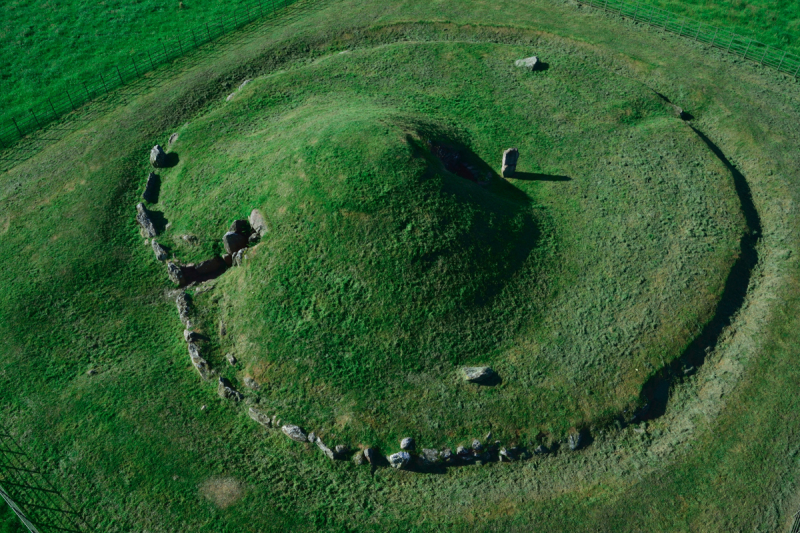
Photo: bradshawfoundation.com -
In Holyhead, North Wales, there is a marine museum called the Holyhead Maritime Museum. She launched 38 times and saved 128 people before being replaced by the Prince of Wales. The Thomas Fielden, named for their father and presented in 1875 by MP Joshua Fielden and his brothers, required the home to be expanded. After purchasing a second large boat in 1890, the home was expanded to allow a beach-based landing from a horse-drawn carriage.
A trustees group was established on September 24, 1984, following the holding of local marine exhibitions in other locations in 1982 and 1983. The Duke of Westminster officially opened the museum in March 1986 after the trustees secured a nine-year lease from the Church in Wales on the abandoned St. Elbods church.
Stena Line offered the museum a peppercorn rent on the refurbished Lifeboat house at Newry Beach after the lease expired and after failing to reach an agreement on a lease within a new development. The museum reopened in its current location in 1998 after deciding to upgrade the structure by developing new visitor facilities with funds from the Heritage Lottery Fund and renegotiating the lease to 99 years.
Location: Newry Beach, Holyhead, North Wales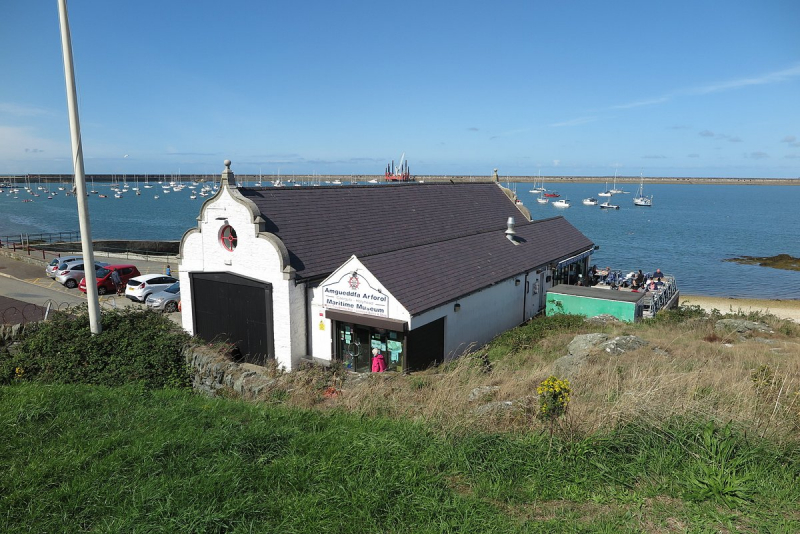
Photo: tripadvisor.com 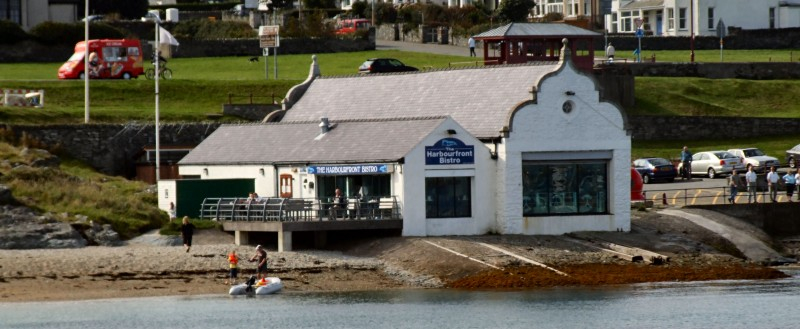
-
In Anglesey, north Wales, Capel Lligwy is a disused chapel from the first part of the 12th century that lies close to Rhos Lligwy. It is unknown what the chapel was used for initially, however it may have served as a memorial chapel, a chapel associated with a nearby royal court, or a chapel of ease in a sizable parish with a burgeoning population. It served as a private place of worship for a neighboring house for a while up to the early 18th century, after which it fell into decay. There is no roof, but the walls are still there, with some internal remnants of render.
It has a side chapel from the 16th century with a burial chamber beneath it. In particular, because it is "a fundamentally 12th-century structure" with the "unique 16th-century vaulted south chapel," it is a Grade II listed building, a national distinction awarded to "buildings of great interest, which merit every effort being made to preserve them".
Along with the chapel, the Lligwy region contains an intriguing triad of ruins from three different historical periods: the Din Lligwy Hut Group (seen above), which is from the Roman era, and the Neolithic burial chamber from the end of the third millennium BC. When taken as a whole, they show an intriguing contrast of times.
Location: Rhos Lligwy, Anglesey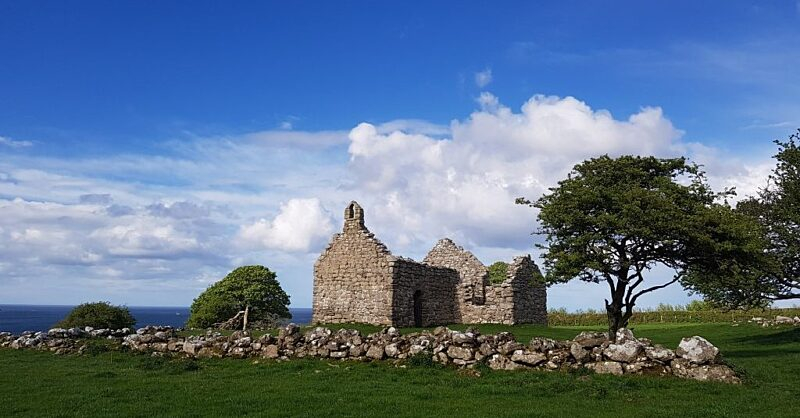
Photo: boltholesandhideaways.co.uk 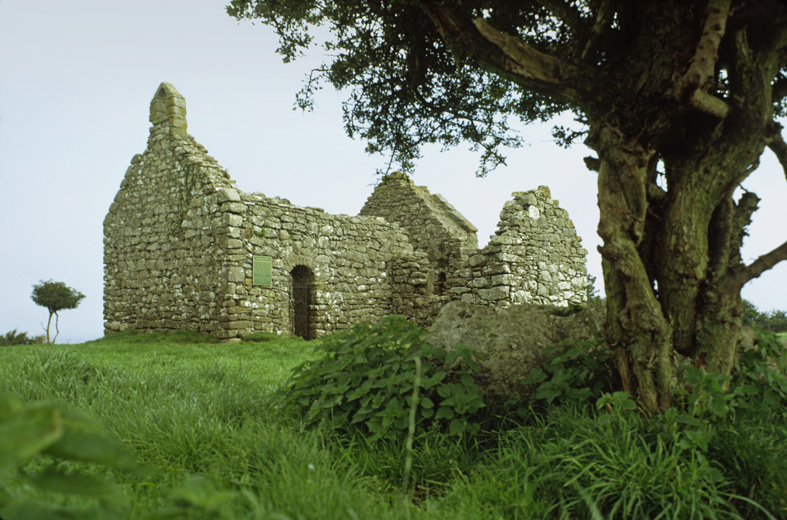
Photo: mapio.net -
The Menai Suspension Bridge is a suspension bridge spanning the Menai Strait between the island of Anglesey and the mainland of Wales. Designed by Thomas Telford and completed in 1826, it was the world's first major suspension bridge. The bridge still carries road traffic and is a Grade I listed structure.
Glacial erosion along a corridor of vulnerability connected to the Menai Strait Fault System produced the Menai Strait. A sequence of ice sheets passed through Anglesey and the neighboring Arfon during a period of Pleistocene glaciations, eroding the underlying rock and leaving behind a series of linear bedrock hollows. As the ice sheets retreated, creating the Menai Strait, the deepest of these canals finally became swamped by the sea.
Because of its tall banks, which would be high enough for sailing ships to pass underneath, the bridge's location was chosen. A suspension bridge, according to Telford, would be the ideal choice since it would have a span large enough to traverse the Strait's swiftly moving waves at this point. The Parliament approved of his advice. Menai Suspension Bridge is one of the most beautiful historical sites in Anglesey.
Location: Menai Strait, Anglesey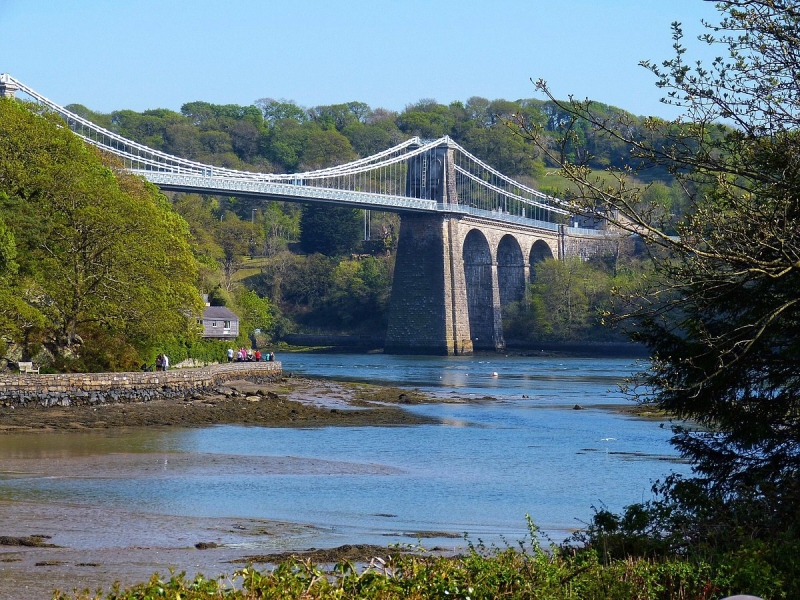
Photo: tripadvisor.com 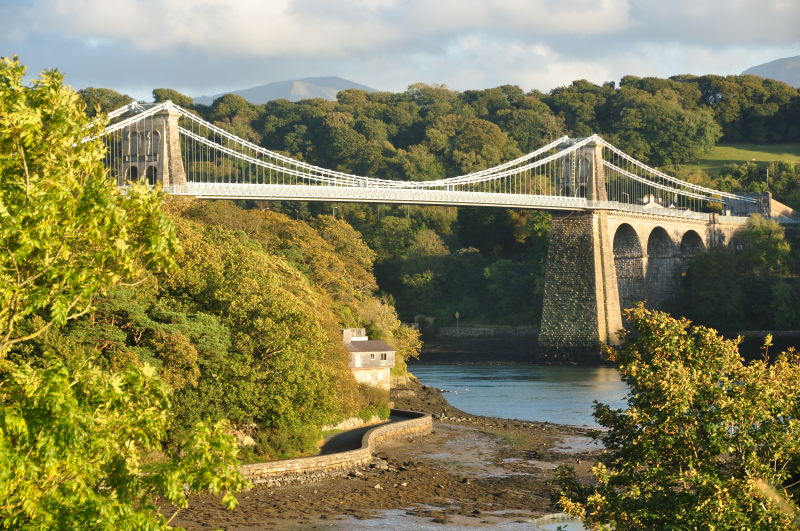
Photo: wikimedia commons -
Near Newborough on Anglesey, there is an archaeological site called Llys Rhosyr, also called "Cae Llys," which contains the remains of a pre-Edwardian communal court. The Welsh word Llys originally meant a closed-off outdoor area, but it later came to imply a location where judicial procedures took place and eventually came to refer to royal "courts".
Before Wales was conquered by Edward I of England, Llys Rhosyr was a major community, and its previous uses are currently the subject of contention. The Pritchard-Jones Institute in the hamlet has hosted an exhibition about the Gwynedd Archaeological Trust's research that supports the theory that it was formerly a royal residence. The enclosure contained a hall, lodging, and storage barns that were originally made of stone and wood, according to excavations. The structures might have covered a space measuring 450 by 300 feet.
The Gwynedd Archaeological Trust began excavating there in 1992, and the site was first made accessible to the public in 1995. Only the outlines of the walls, including the main enclosing wall and the foundations and lower walls of three substantial buildings—possibly the hall, a chamber, and storage barns—remain. Only about a fourth of these walls are visible. Numerous artifacts were found at the site, including lead fishing weights and pottery and cutlery that would have been used by persons of high social position. It is the only royal court in Gwynedd whose location has been dug up thus far.
Location: Church St, Niwbwrch, Llanfairpwllgwyngyll LL61 6SG, United Kingdom
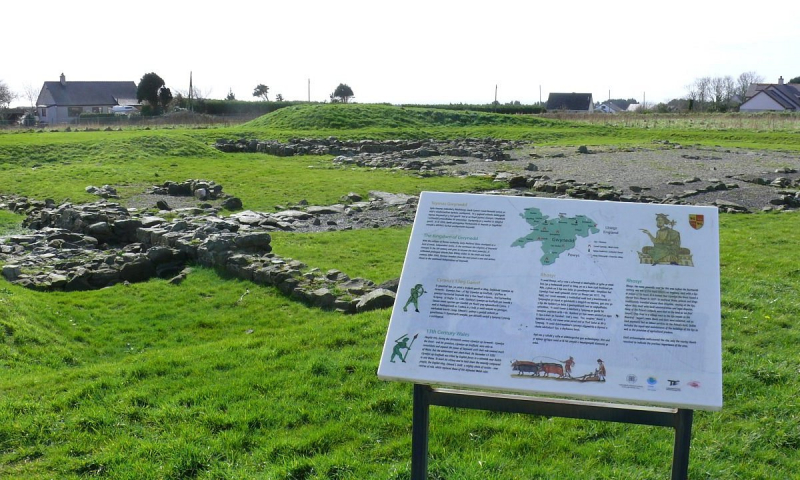
Photo: tripadvisor.com 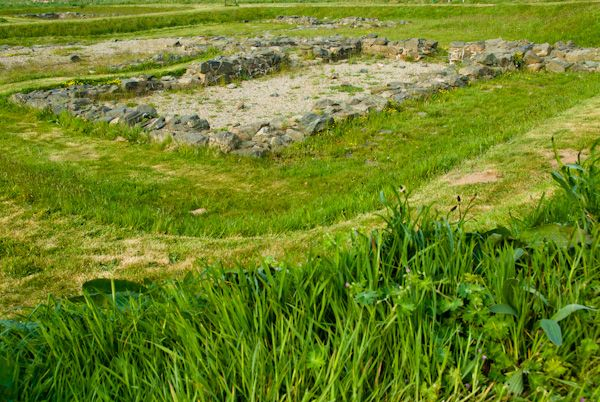
Photo: britainexpress.com -
A medieval church can be found in the Welsh village of Llanbadrig called St. Padrig's Church. The structure had restorations in the 19th century and is most likely from the 12th century. On December 5, 1970, it was given the grade II* designation as a listed building.
According to legend, Pope Celestine I dispatched Saint Patrick to Ireland in the fifth century with the aim of converting the natives to Christianity. A half-mile off the northern coast of Anglesey's island of Middle Mouse (Ynys Badrig), he was shipwrecked there upon his return. He took refuge in a cave nearby, and when he eventually reached Anglesey's mainland, he erected a cathedral atop the surrounding cliffs as a sign of gratitude for his rescue. The current stone construction may have started in the twelfth century, and the font has also been dated to that time period, although nothing of this wooden structure is still there.
When the Norwich Taxation, an estimate of clergy property performed for taxation purposes, was published in 1254, the church already existed. The nave and the chancel were constructed separately, the former most likely in the twelfth or thirteenth century and the latter later. The early fourteenth century is possible for the chancel arch. The east window in the chancel is most likely from the sixteenth century, although the other windows were probably reglazed in 1812, 1840, or 1884, when more extensive restoration work was carried out.
Location: Cemaes, Anglesey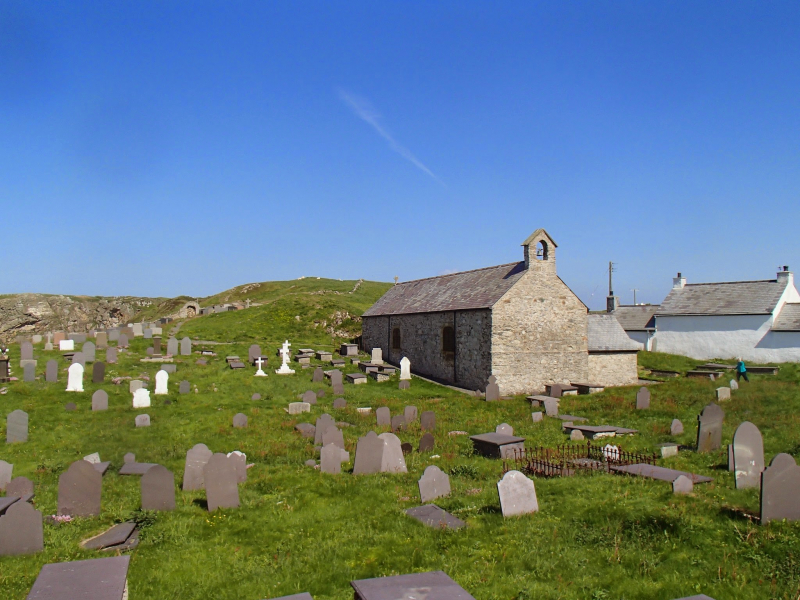
Photo: cemaes.wales 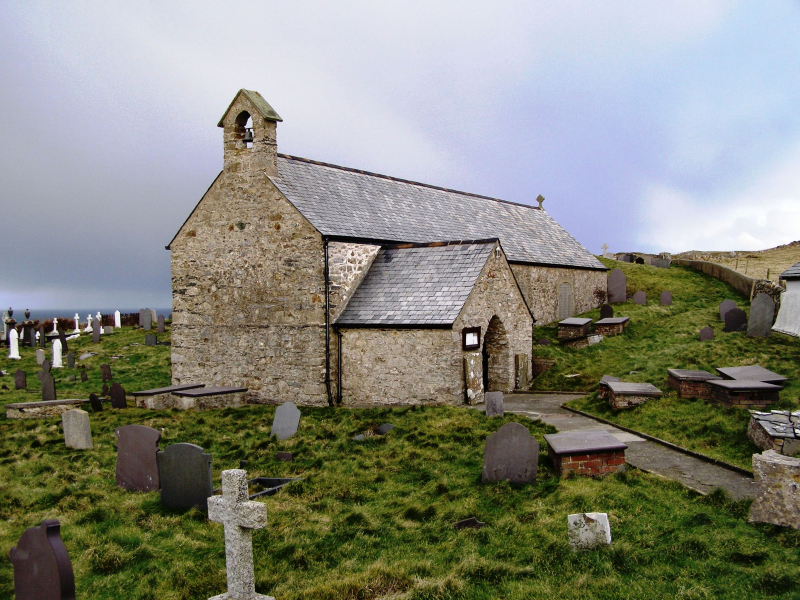
Photo: wikimedia.commons -
Hugh d'Avranches, 1st Earl of Chester, constructed the motte-and-bailey fortification known as Castell Aberlleiniog between 1080 and 1099 close to the Welsh village of Llangoed on the Isle of Anglesey. It is located on top of a very steep hill, roughly two miles from Beaumaris Castle.
Abergwyngregyn's Norman fortress stands just across the Menai Strait from Castell Aberlleiniog, demonstrating how crucial visual contact was to the Norman invaders. Hugh d'Avranches, 1st Earl of Chester, who invaded Gwynedd in 1088, is thought to have built it. Few historical records exist that describe the events the castle has witnessed throughout the course of its history, but some do, including a chronicle of a siege by Gruffudd ap Cynan on his return from Ireland in 1094.
Before Thomas Cheadle, the constable of Beaumaris destroyed it in the middle of the 17th century, the original Norman timber structure had long since been replaced by a stone building. The location was renovated in 2008 and is now (2016) accessible to the public. Every corner of the keep contained a round tower, the remnants of which can still be seen. The keep had large ramparts fronted by a short wall rising to a parapet.
Location: Llangoed, Beaumaris LL58 8RY, Anglesey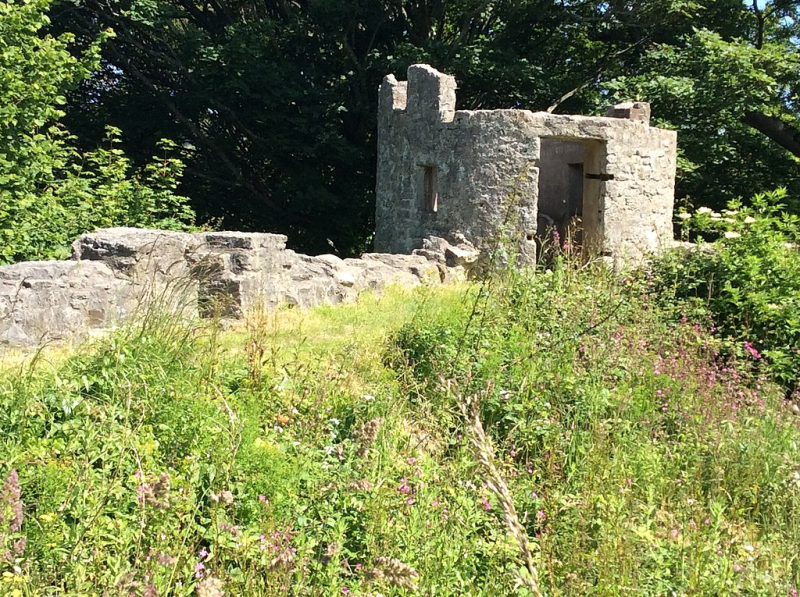
Photo: wikimedia commons Video: https://www.youtube.com/watch?v=WBGJAzNppiE -
A small tidal island named Ynys Llanddwyn is located off the northwest Welsh island of Anglesey. The village of Newborough is the closest community. The pillow lava, jasper formations, and aeolian sand deposits on the island are of geological importance. The island is a part of the vast and botanically diverse sand dune system known as Newborough Warren National Nature Reserve.
The tidal island of Ynys Llanddwyn is still connected to the mainland except during high tide. Views of Snowdonia and the Lln Peninsula are available. The Menai Strait's western entrance is marked by the Tr Mawr lighthouse. 478,204 people visited the Newborough National Nature Reserve & Forest in 2018, which includes Ynys Llanddwyn. Ynys Llanddwyn and Newborough Warren are connected by more than 16 km of footpaths, including the Anglesey Coastal Path, and are particularly popular tourist destinations. After a mile-long walk along the beach from the closest parking lot, the island offers a worthwhile destination. In appreciation of the cleanliness of the sea and beaches, Ynys Llanddwyn and the nearby beach have received the Blue Flag designation.
Location: the west coast of Anglesey, northwest Wales
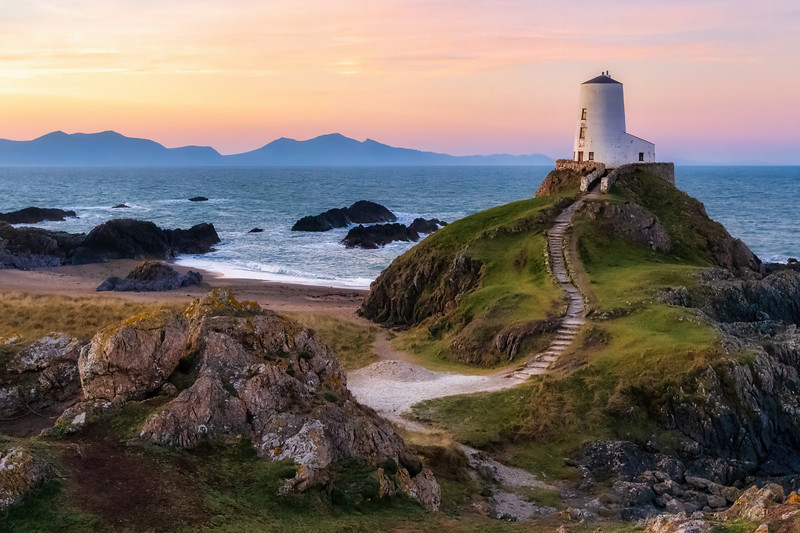
Photo: naturesuniverse.uk 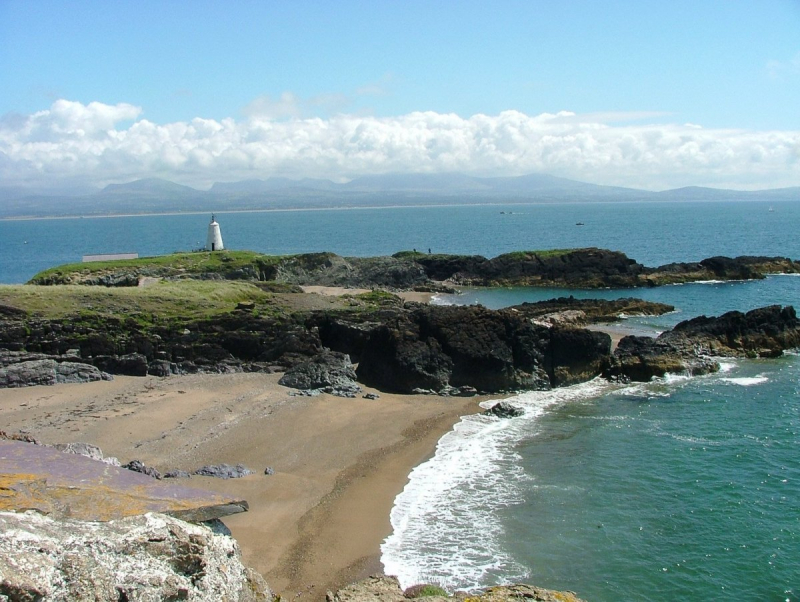
Photo: walkthewalescoastpath.co.uk















